Last November, THE PACK had the opportunity to test out the Kawasaki Z e-1 in Brussels (Belgium). This lightweight electric motorbike is similar to a traditional 125cc motorcycle, making it easy to navigate through city streets. Today, we were able to try out the Ninja e-1, which has a more sporty appearance with its fairings and clip-on handlebars. However, don’t let the name “Ninja” fool you into thinking it’s a superbike. In fact, Kawasaki designed these electric motorbikes specifically for urban city commuting.
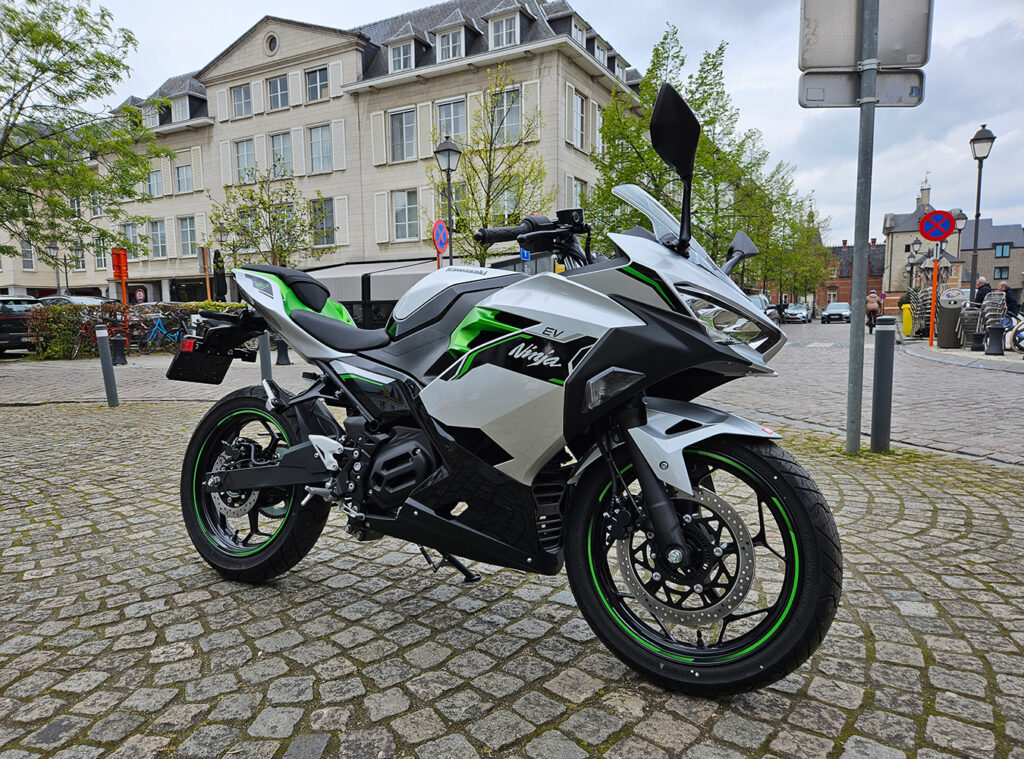
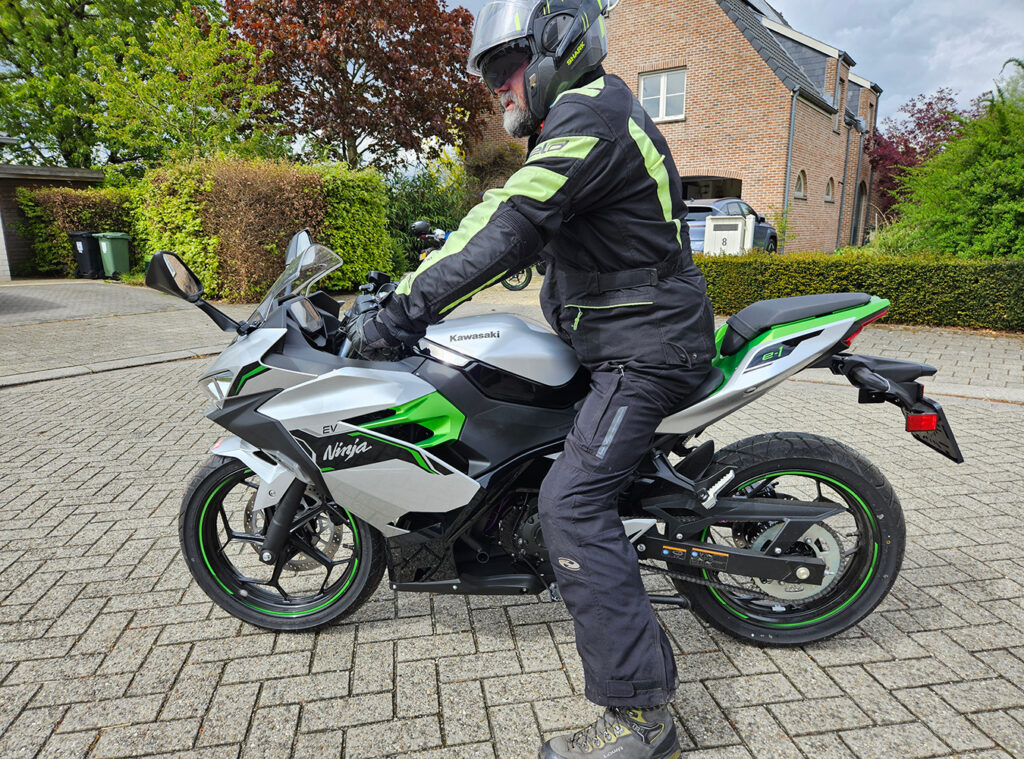
The Ninja e-1 runs on a brushless electric motor with a power rating of 5.0 kW, capable of reaching a maximum rating of 9.0 kW. The transmission has a single ratio, and the electric motor means there is no need for a clutch or shift lever. However, Kawasaki made the decision to keep the rear brake foot-operated instead of moving it to the handlebar like most scooters and ebikes.
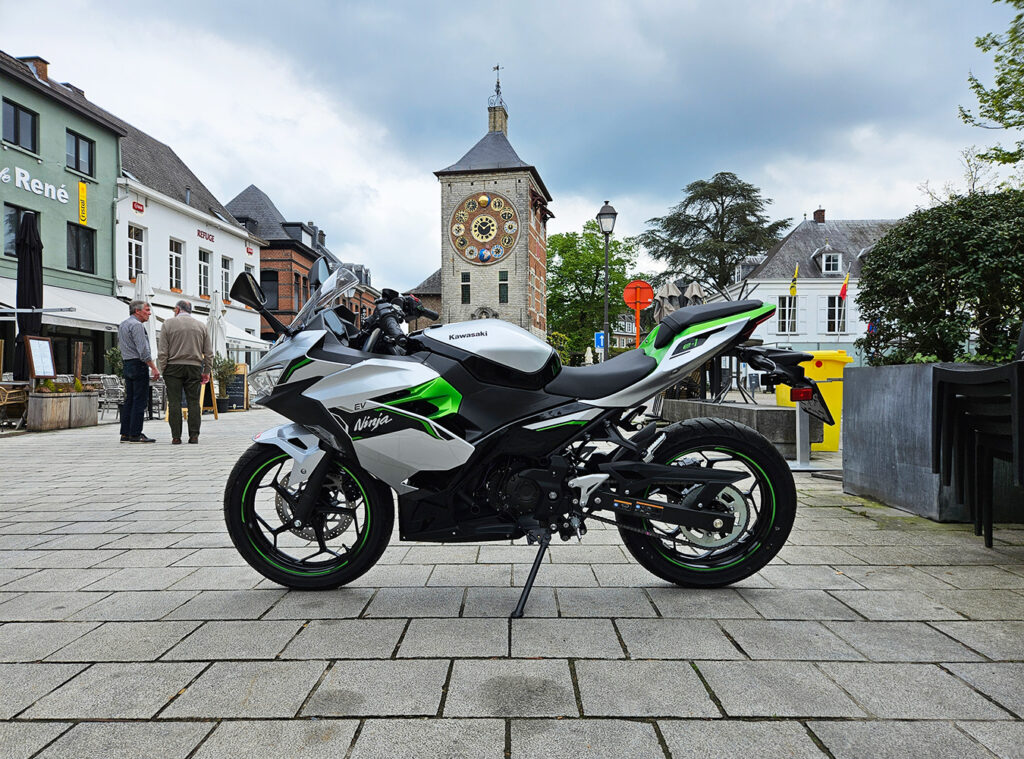
The unique Metallic Bright Silver and Metallic Matte Lime Green finish gives a stylish and sporty appearance to this Kawasaki EV model. The rider also has an impressive TFT display with smartphone connectivity at their fingertips. This display shows important information such as the machine’s riding status, range, availability of the boost function, and selected riding modes (Road or Eco). All of these features seamlessly integrate with the user-friendly throttle, ABS brakes, and trellis frame.
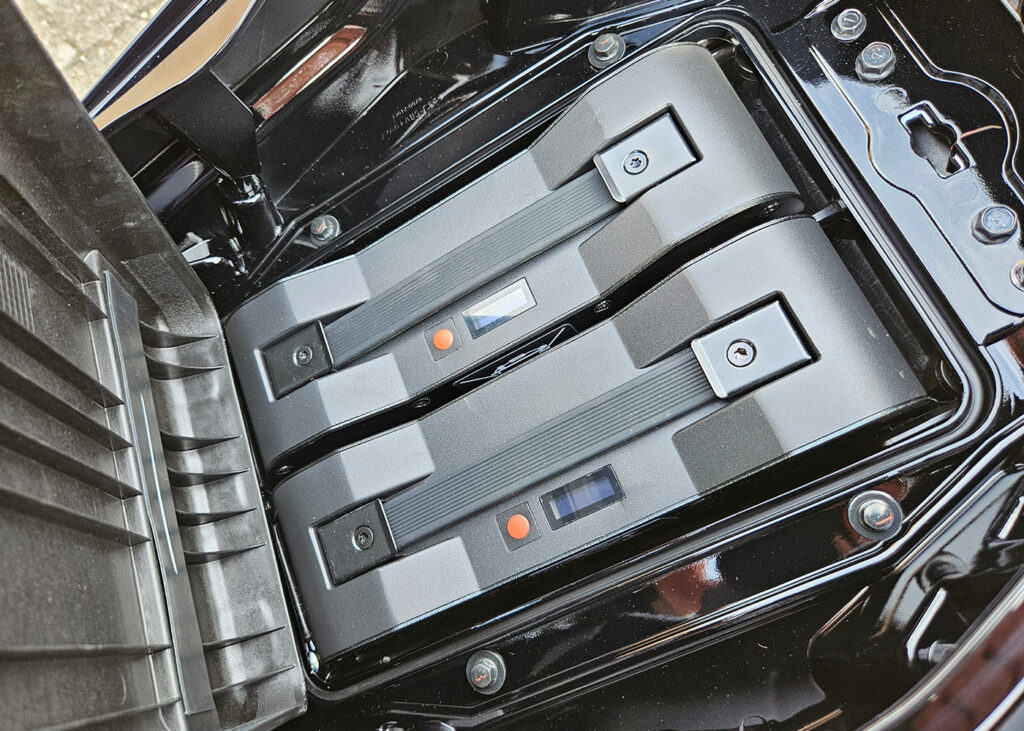
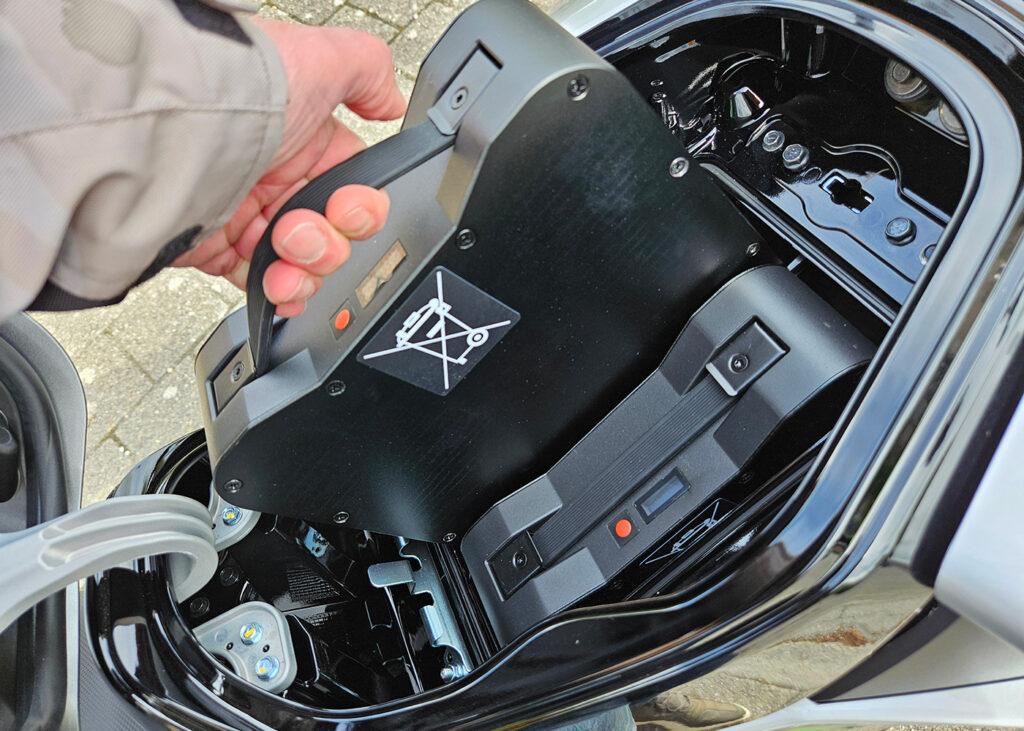
Underneath a faux gas tank, 2 lithium-ion batteries with a weight of 11,5 kg each can be easily removed. These batteries have a capacity of 30Ah and operate at a voltage of 50.4V. When combined, their total capacity is 60Ah. The charging options for this motorbike include a docking station capable of holding one battery, as well as a cable that connects the external charger to the batteries while they are still in the bike. A useful feature of the advanced Li-Ion batteries are their built-in charging indicators. The Ninja also contain a convenient lockable storage space above the batteries.
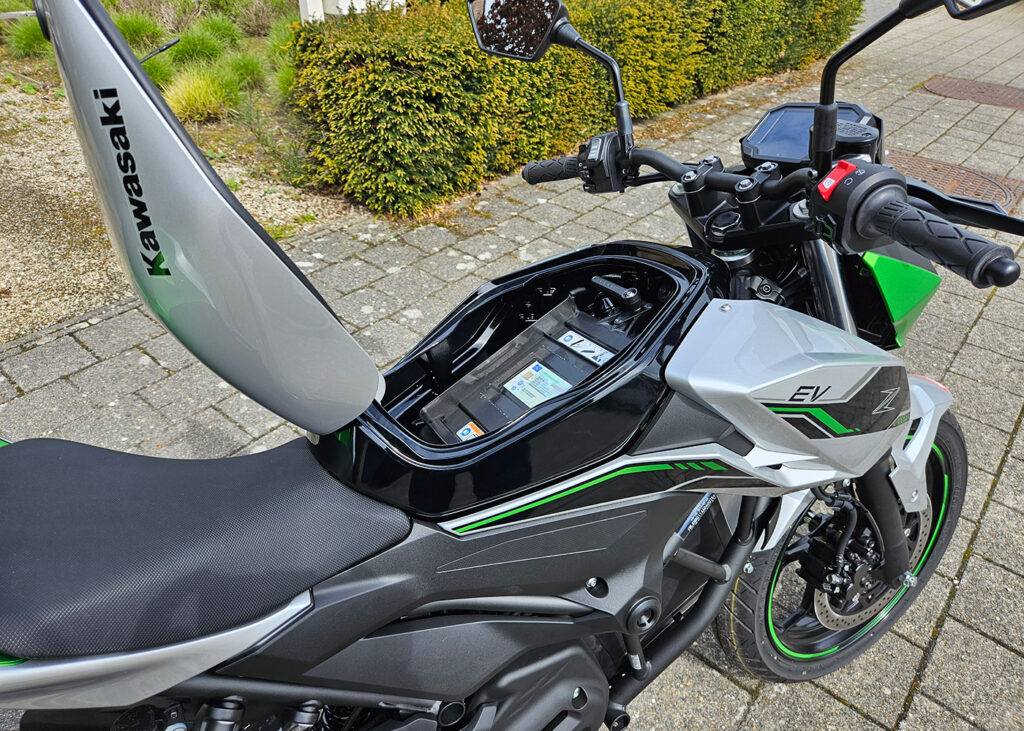
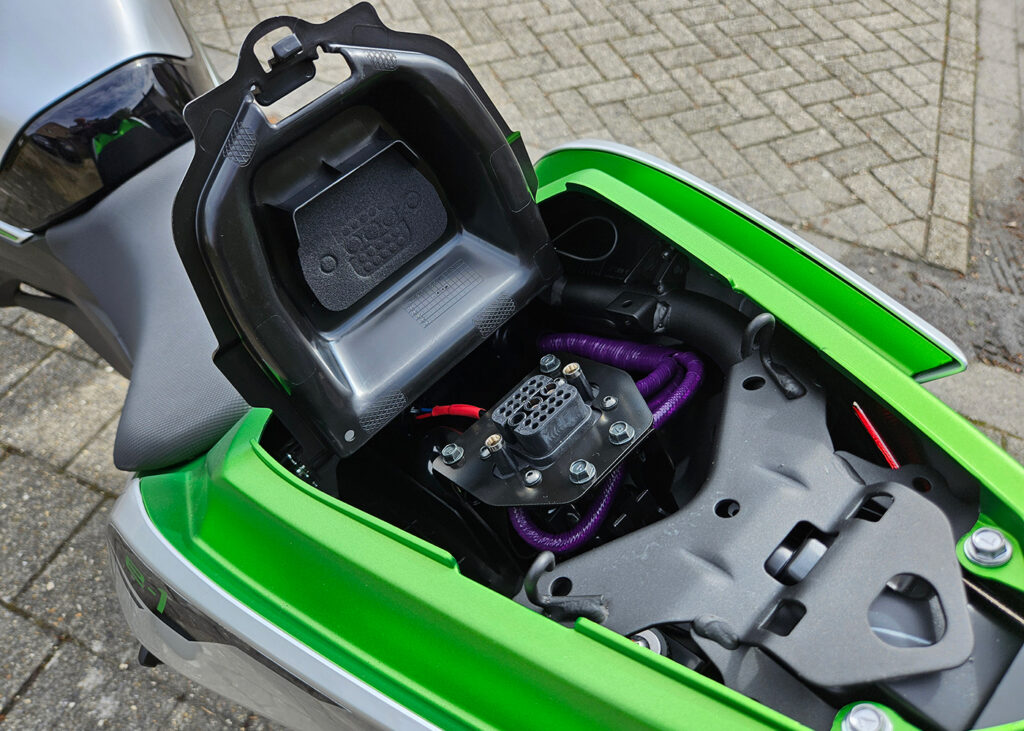
We began with a battery at 93% capacity and drove 30 km. We frequently utilized the turbo e-boost feature and returned with a remaining charge of 43%. In about 2.5 hours, we were able to fully recharge the battery using an off-board charger (household outlet).
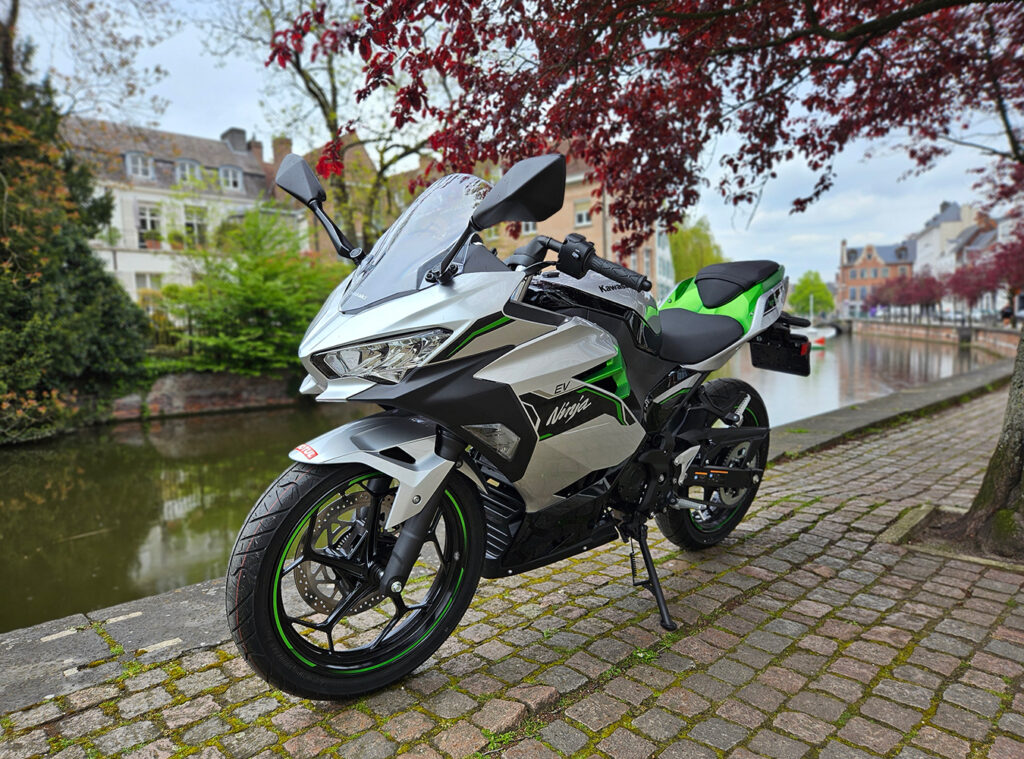
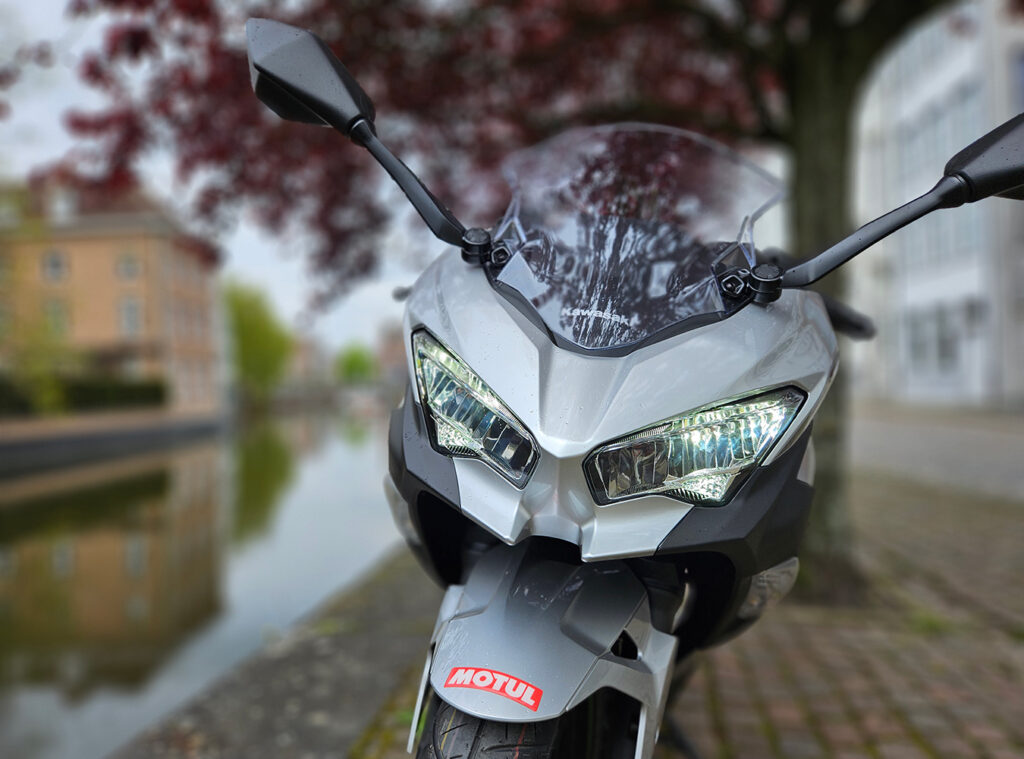
The Ninja offers three different modes for riding: Road, Eco, and Walk. The Walk mode allows you to move the bike at a slow speed of 5 km/h forward or 3 km/h in reverse. Depending on the model, the top speed varies. The Ninja e-1 can reach up to 88 km/h in Road mode and 64 km/h in Eco mode, while the Z e-1 has a maximum speed of 85 km/h in Road mode and 62 km/h in Eco mode. Once the battery charge drops below 35%, the default mode becomes Eco for both models. The motorbikes are marketed as urban commuters and boast a claimed range of 72 km (WMTC Class 1).
With the e-boost feature, the Ninja e-1 can reach a top speed of 99 km/h in Road mode and 75 km/h in Eco mode. The rider can activate the e-boost by pressing a button on the handlebar for up to 15 seconds at a time. And believe me, we used this e-boost frequently …
Conclusion THE PACK
The precision and high-quality construction of Kawasaki is evident in both the Z e-1 and Ninja e-1 motorbikes, something that sets them apart from other electric motorbike options in this price segment. Our team had the opportunity to test the Ninja with a variety of riders, and here is what they had to say:
- “Despite its chain, the ride is quiet and smooth. However, when you let off the “gas,” there is a slight noise from below.”
- “The finish is flawless and the materials are of high quality”.
- “This motorcycle is perfect for a beginner rider.”
- “The E-boost feature adds an element of fun, but we did miss the powerful acceleration typically associated with Kawasaki bikes.”
- “It is worth noting that there is a wide availability of Kawasaki dealers for servicing needs.”
- “The price of 9,039 EUR is correct for this kind of LEV.”
- “Keep in mind that this bike may not be suitable for long highway rides as its speed and range capabilities are limited.”
- “Overall, this model caters to a specific group of clients and with 11 kW you can use your car driving license (but check your country laws).”
- “Oh man, just for the looks of it, I need a rear fat tyre …”
- “With my 1.80 m length, I felt pretty “folded” on the Ninja, but it looked sporty …”
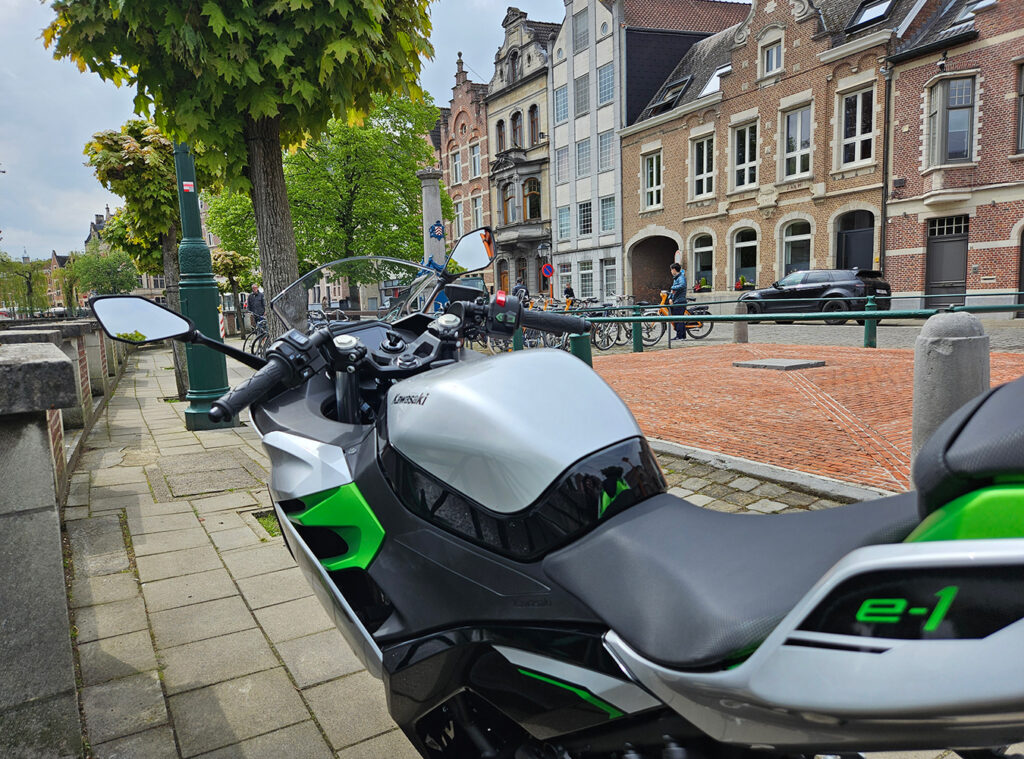
Guy Salens, THE PACK: “The Ninja e-1 is a lightweight motorbike with a lot of design details, and enjoyable to ride. It may not appeal to everyone, but there is undoubtedly a niche market that will appreciate its qualities. It’s worth noting that Kawasaki is new to the electric motorbike scene and seems to be testing in this arena. While other companies may have plans for motorbikes in the future, Kawasaki is already producing and selling them, which could give them an edge as they expand their electric motorbike offerings. They are even leading the charge among their fellow “Big 4” competitors by offering a range of EV’s, including two hybrids – the Ninja 7 Hybrid and Z7 Hybrid. By introducing these fully electric models – the Z e-1 and Ninja e-1 – Kawasaki is targeting a new audience of urban commuters looking for sustainable and efficient modes of transportation. Besides, at our THE PACK Plaza during Brussels Auto Show (January 2024) we noticed a lot of attention from young people for these electric models Z e-1 (naked bike) and Ninja e-1.”
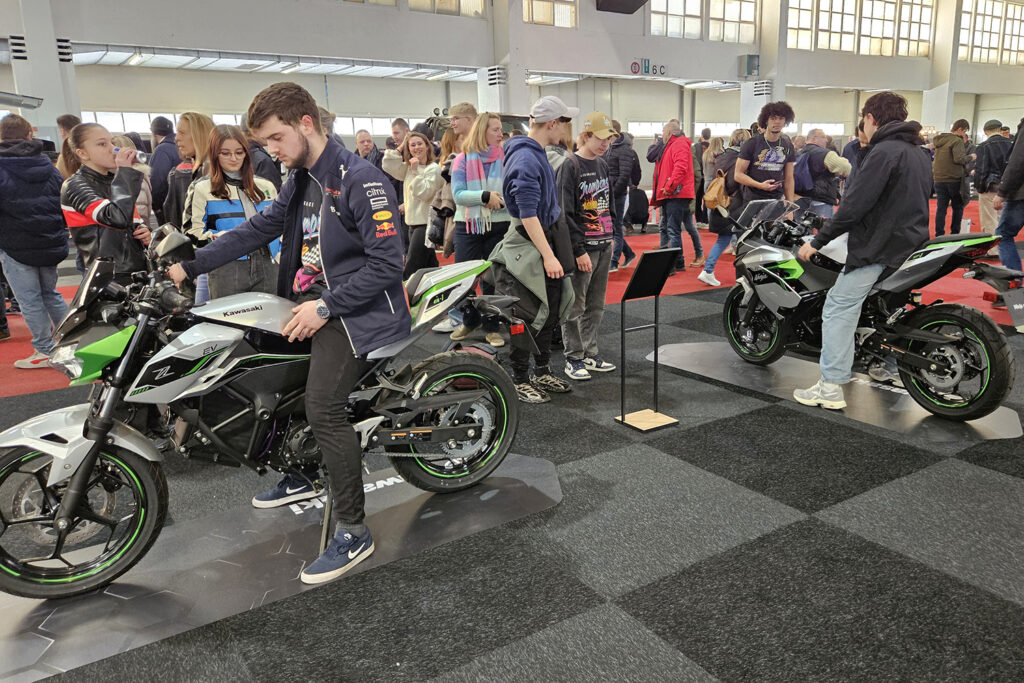
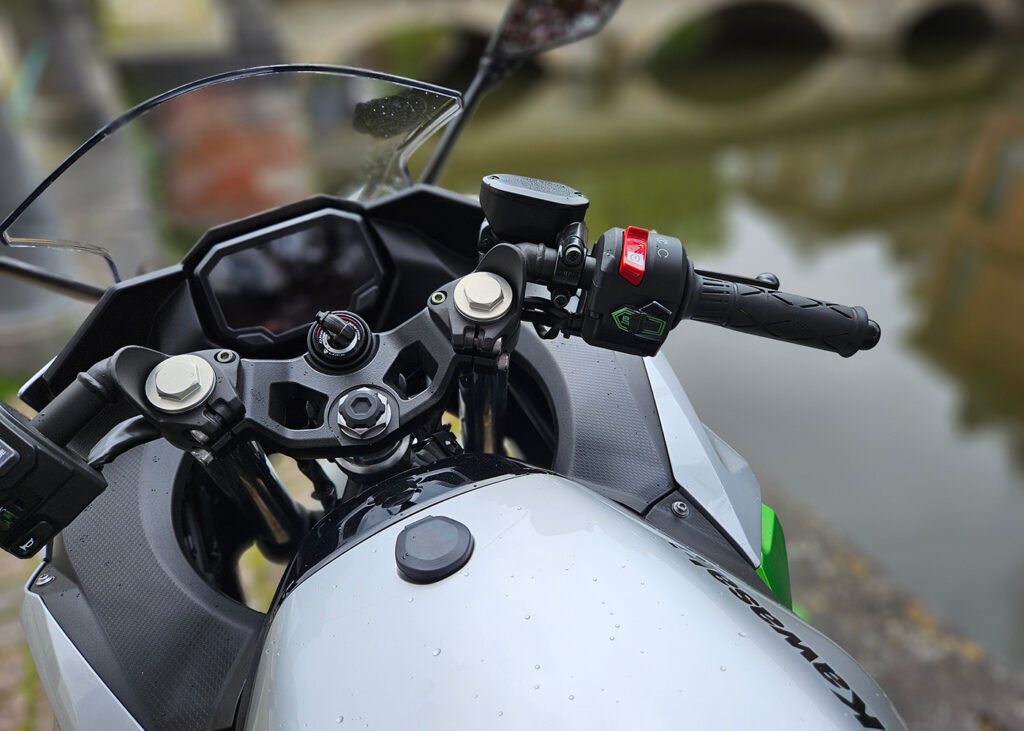
Price
The 9,039 EUR you spend on this electric motorcycle will be worth it — this Ninja e-1 comes with a range of practical features, including ABS, riders connectivity, a 4-year warranty and access to a local dealer network that provides professional services after purchase. Not many startups grant these advantages when their motorbikes are bought online. If you want a more “naked bike” look, the Z e-1 costs 8,439 EUR.
More info and technical specifications at Kawasaki Europe:
Previous post(s) about Kawasaki: